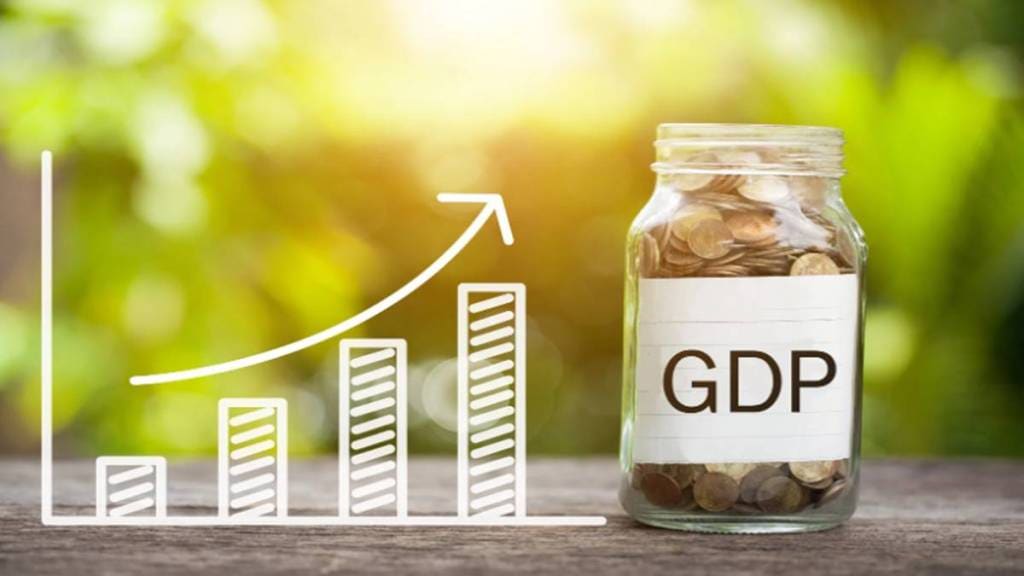Economists have projected the rate of expansion of the gross domestic product (GDP) for the second quarter of the current fiscal year in a wide range from sub-7% to 8%.
Official data will be released on Friday.
The real growth in Q2 of 2025-26 is expected to be nearly 7.5%, primarily due to a boost in consumption following Goods and Services Tax (GST) rate rationalisation, according to the State Bank of India (SBI) Research report released on Tuesday. It underlined that growth is being supported by a pick-up in investment activities, recovery in rural consumption, and buoyancy in services and manufacturing.
“We track 50 leading indicators across consumption and demand, agriculture, industry, services and other segments, which show acceleration in Q2 FY26 growth (as compared to Q1 FY26). The percentage of indicators showing acceleration has increased to 83% in Q2 from 70% in Q1. Based on the estimated model, we obtain a nowcast of real GDP growth of 7.5–8.0% (Gross Value Added (GVA): 8.0%) in Q2 FY26,” the report said.
The SBI Research, however, cautioned about risks from volatile global commodity markets and potential spillovers from trade disruptions. “Overall, India’s near-term outlook is strong, with macroeconomic stability providing space for sustained medium-term growth,” it said.
The real GDP growth in the first quarter stood at 7.8%. The Reserve Bank of India has projected Q2 GDP growth at 7%, and annual GDP growth at 6.8%. For Q3 and Q4, RBI projected 6.4% and 6.2% respectively. The SBI Research, however, estimates FY26 GDP growth at 7.3%–7.5%.
Rating agency ICRA projected the real GDP growth would ease to 7% in the second quarter of the current financial year, with the GVA to dip slightly to 7.1% from 7.6% in Q1. Highlighting a notable shift in growth drivers in Q2, it projected that industry would outpace services for the first time in four quarters even as overall GDP expansion moderates. It said a strengthening industrial performance, propelled by manufacturing, construction and favourable base effects, is expected to underpin the quarter’s economic activity. The agency added that the service and agriculture sectors are set to lose some momentum.
“A lower YoY rise in government spending is likely to weigh on the pace of the GDP and GVA growth in Q2 FY2026 compared to Q1 FY26. However, inventory stocking related to the early onset of the festive season, enhanced by the GST-rationalisation induced volume pick-up, and upfronting of exports to the US ahead of the tariffs, are expected to boost the performance of the manufacturing sector, and help industry GVA growth outpace that of the services after a gap of four quarters,” Aditi Nayar, Chief Economist, Head-Research & Outreach, ICRA said
The DBS Group Research in its economic outlook projected the real GDP growth rate for 2025-26 at 7.2%, and the rate for Q2 to be sub-7%. It expected support from domestic factors such as rate cut, low inflation, strong monsoon, government’s capital expenditure spending, transmission of past reductions, support for tariff-hit sectors to sustain the growth momentum.
“Low deflators will weigh on the nominal growth pace, which is expected to slow to 8.5% (FY26), which is a crucial input for fiscal ratios and corporate earnings. Some of this one-off impact from deflators is expected to fade in FY27, taking real GDP growth to 6.5% and nominal pace back up to 10%,” the DBS Group Research said. It further indicated that the room for aggressive rate cuts is limited in midst of firm growth and inflation undershoot.

